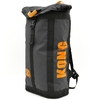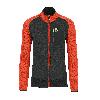Lleida, sport climbing in Spain
Lleida in Spain has been developing fast into one of the world's premier sport climbing areas, thanks in great part to one of the main activists, Dani Andrada. Pete O'Donovan introduces the Catalonian delights.
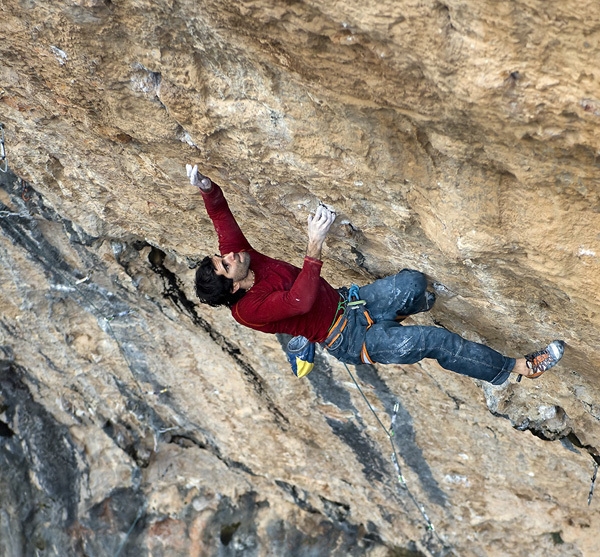
 1 / 11
1 / 11
Dani Andrada on 'Analógica' (9a/9a+) at Santa Linya
 Pete O'Donovan
Pete O'Donovan
It’s hardly a secret that Catalunya, that mountainous landscape of North-eastern Spain, is home to some of the finest rock climbing in the world. One only has to mention the names of its most famous zones — Siurana, Montsant, Margalef, etc. — to conjure up images of fantastic cliffs set amidst dramatic scenery. Catalunya’s largest and most westerly province, Lleida, has for many years lagged behind other parts of the region in terms of popularity with visiting climbers. True enough, cliffs such as the “Cova Gran” in Santa Linya, and “Paret de les Bruixes” in Terradets, attract wandering rock-enthusiasts from near and far, but these two zones, fantastic though they are, constitute only a tiny fraction of what the area has to offer.
Now a new selected climbs guidebook “Lleida Climbs” aims to draw attention to the area’s lesser-known zones — encompassing everything from sandstone bouldering in the south of the province to multi-pitch granite routes in the Catalan Pyrenees. The authors of the guide are British climber/photographer Pete O’Donovan, and top Spanish climber Dani Andrada. Dani started climbing as a young teenager on cliffs near his home-city of Madrid, but after an early visit to Catalunya revealed the region’s vast potential, he moved lock stock and barrel to the city of Lleida. Since then he has been at the forefront of hard new route development here, almost single-handedly changing Lleida from an unknown backwater into the major climbing area it is today. What follows is a brief introduction to a small selection of the zones covered.
Camarasa & Sant Llorenç de Montgai
These twin zones, located in the Segre valley about 40km north of Lleida capital, are two of the region’s oldest ‘schools’. At Camarasa the vertical walls rise above the river, giving superb climbing on beautiful rough limestone. Although grades run up to 8c+, Camarasa’s true worth lies in the ‘middle’ grades — 6b-7b, and thanks to the North-westerly orientation of most of its sectors, the zone makes a perfect summer retreat.
A few kilometres along the road lies Sant Llorenç de Montgai, a zone of complete contrasts: on the higher conglomerate cliffs one finds excellent multi-pitch routes, while the smaller, steeper sectors hold climbs which, until the appearance of ‘super-routes’ at places such as Oliana and Santa Linya, were considered as the hardest in the region. One sector — the impressive twin-caves of “Disblia” — was often used as an outdoor training facility by a young Dani Andrada: it seems to have worked for him!
Oliana (Contrafort de Rumbau)
This awesomely steep cliff has to be one of the most stunning rock faces in Europe, and the climbs attacking the steeper central section of the wall almost redefine the word “spectacular”. Although first developed by local Catalan climbers in 2004, it was the arrival of American Chris Sharma that really got the ball rolling. Now the cliff offers a selection of more than 50 climbs, some of which — such as Papichulo and Pachamama (both 9a+) — are considered amongst the hardest in the world.
Tres Ponts
Another fantastic zone, which surprisingly (in view of its location close to a major road) remained undeveloped until just a few years ago. The zone takes its name from an important medieval trade route along the Segre valley, which crossed three major bridges (the “tres ponts”). The rock is awesome: extremely steep but littered with enormous holds — so big that in spite of the angle there is nothing harder than 8b here — not exactly trivial, but a walk in the park compared to other cliffs in the region. Tres Ponts is another of Lleida’s ‘shadey characters’, at its best from late spring through to mid-autumn.
El Cogul
As a complete contrast to the mountainous landscape of much of Lleida province, the gentle farmland between the villages of El Cogul and Albagés is at first sight an unlikely spot for climbing. However, closer inspection reveals hundreds, if not thousands, of sandstone boulders nestling among the fields of Olives and Almonds — a perfect retreat for the coldest days of winter, and an increasingly popular stopping off point for any serious Euro-boulderer. The sandstone is mostly solid and fine-grained, offering steep fingery walls and powerful roofs, as well as many spectacular 90° arêtes. One of these, Beer Action, has to be one of most visually beautiful 7b+ boulder problems anywhere in Europe. Climbing in El Cogul is extremely weather dependant (especially for the harder problems), and the first warm days of early spring usually mark the end of the season.
Practical Info
Seasons: Although the winter months are the most popular time for climbers visiting the region, the common perception that it is only possible to climb anywhere in Spain during this period is incorrect. Places such as Camarasa and Tres Ponts (described above) are at their best from May to October, and many of Lleida’s other zones often feature east or west facing sectors, allowing climbing either early in the morning or late in the afternoon on all but the hottest of days.
Accommodation: Lleida offers a wide variety of accommodation with something to suit all tastes and pockets. In the summer months camping is often the best solution, and the many sites spread around the region are generally of the highest standards. In winter, with shorter days and colder nights, most climbers will require a more substantial roof than canvas over their heads. The options range from Refugis and Hotels to self-catering rural houses, of which there are many hundreds to choose from. An excellent source of information in this respect is the Lleida Tourism website: www.lleidatur.com.
Guidebooks
A number of locally specific guidebooks exist:
Lleida Climbs (2010) Pete O’Donovan & Dani Andrada: a selected climbs guidebook featuring 21 different zones in the province.
El Salvatge Oest de Catalunya (2006) Luis Alfonso, Xavi Buxó et al.
Terradets (2005) Luis Alfonso & Xavi Buxó.
Vilanova de Meià (2002) Luis Alfonso & Xavi Buxó.
Montsec Oest (1998) Luis Alfonso & Xavi Buxó.
Collegats (2010) Armand Ballart, Mark Ollé & Mariona Orfila.
Roca Caliente en los Pirineos — 3 Volumes, Luis Alfonso & Xavi Buxó.
Now a new selected climbs guidebook “Lleida Climbs” aims to draw attention to the area’s lesser-known zones — encompassing everything from sandstone bouldering in the south of the province to multi-pitch granite routes in the Catalan Pyrenees. The authors of the guide are British climber/photographer Pete O’Donovan, and top Spanish climber Dani Andrada. Dani started climbing as a young teenager on cliffs near his home-city of Madrid, but after an early visit to Catalunya revealed the region’s vast potential, he moved lock stock and barrel to the city of Lleida. Since then he has been at the forefront of hard new route development here, almost single-handedly changing Lleida from an unknown backwater into the major climbing area it is today. What follows is a brief introduction to a small selection of the zones covered.
Camarasa & Sant Llorenç de Montgai
These twin zones, located in the Segre valley about 40km north of Lleida capital, are two of the region’s oldest ‘schools’. At Camarasa the vertical walls rise above the river, giving superb climbing on beautiful rough limestone. Although grades run up to 8c+, Camarasa’s true worth lies in the ‘middle’ grades — 6b-7b, and thanks to the North-westerly orientation of most of its sectors, the zone makes a perfect summer retreat.
A few kilometres along the road lies Sant Llorenç de Montgai, a zone of complete contrasts: on the higher conglomerate cliffs one finds excellent multi-pitch routes, while the smaller, steeper sectors hold climbs which, until the appearance of ‘super-routes’ at places such as Oliana and Santa Linya, were considered as the hardest in the region. One sector — the impressive twin-caves of “Disblia” — was often used as an outdoor training facility by a young Dani Andrada: it seems to have worked for him!
Oliana (Contrafort de Rumbau)
This awesomely steep cliff has to be one of the most stunning rock faces in Europe, and the climbs attacking the steeper central section of the wall almost redefine the word “spectacular”. Although first developed by local Catalan climbers in 2004, it was the arrival of American Chris Sharma that really got the ball rolling. Now the cliff offers a selection of more than 50 climbs, some of which — such as Papichulo and Pachamama (both 9a+) — are considered amongst the hardest in the world.
Tres Ponts
Another fantastic zone, which surprisingly (in view of its location close to a major road) remained undeveloped until just a few years ago. The zone takes its name from an important medieval trade route along the Segre valley, which crossed three major bridges (the “tres ponts”). The rock is awesome: extremely steep but littered with enormous holds — so big that in spite of the angle there is nothing harder than 8b here — not exactly trivial, but a walk in the park compared to other cliffs in the region. Tres Ponts is another of Lleida’s ‘shadey characters’, at its best from late spring through to mid-autumn.
El Cogul
As a complete contrast to the mountainous landscape of much of Lleida province, the gentle farmland between the villages of El Cogul and Albagés is at first sight an unlikely spot for climbing. However, closer inspection reveals hundreds, if not thousands, of sandstone boulders nestling among the fields of Olives and Almonds — a perfect retreat for the coldest days of winter, and an increasingly popular stopping off point for any serious Euro-boulderer. The sandstone is mostly solid and fine-grained, offering steep fingery walls and powerful roofs, as well as many spectacular 90° arêtes. One of these, Beer Action, has to be one of most visually beautiful 7b+ boulder problems anywhere in Europe. Climbing in El Cogul is extremely weather dependant (especially for the harder problems), and the first warm days of early spring usually mark the end of the season.
|
Practical Info
Seasons: Although the winter months are the most popular time for climbers visiting the region, the common perception that it is only possible to climb anywhere in Spain during this period is incorrect. Places such as Camarasa and Tres Ponts (described above) are at their best from May to October, and many of Lleida’s other zones often feature east or west facing sectors, allowing climbing either early in the morning or late in the afternoon on all but the hottest of days.
Accommodation: Lleida offers a wide variety of accommodation with something to suit all tastes and pockets. In the summer months camping is often the best solution, and the many sites spread around the region are generally of the highest standards. In winter, with shorter days and colder nights, most climbers will require a more substantial roof than canvas over their heads. The options range from Refugis and Hotels to self-catering rural houses, of which there are many hundreds to choose from. An excellent source of information in this respect is the Lleida Tourism website: www.lleidatur.com.
Guidebooks
A number of locally specific guidebooks exist:
Lleida Climbs (2010) Pete O’Donovan & Dani Andrada: a selected climbs guidebook featuring 21 different zones in the province.
El Salvatge Oest de Catalunya (2006) Luis Alfonso, Xavi Buxó et al.
Terradets (2005) Luis Alfonso & Xavi Buxó.
Vilanova de Meià (2002) Luis Alfonso & Xavi Buxó.
Montsec Oest (1998) Luis Alfonso & Xavi Buxó.
Collegats (2010) Armand Ballart, Mark Ollé & Mariona Orfila.
Roca Caliente en los Pirineos — 3 Volumes, Luis Alfonso & Xavi Buxó.
Note: 
Lleida Climbs (2013) Pete O'Donovan & Dani Andrada: a selected climbs guidebook.
424 pages.

Lleida Climbs (2013) Pete O'Donovan & Dani Andrada: a selected climbs guidebook.
424 pages.
Latest news
Expo / News
Expo / Products
Practical and strong 30 liter haulbag for climbing and big walls.
A trail running backpack ideal for running in any weather condition. Thanks to the HDry membrane, this backpack is fully waterproof.
Hiking boots for walking at mid-altitudes.
Organic Merino Wool trekking socks
A featherlight insulated layer for cool, high-output days when you need breathability and a touch of warmth
Softshell jacket man Karpos Odle Fleece



 Copia link
Copia link
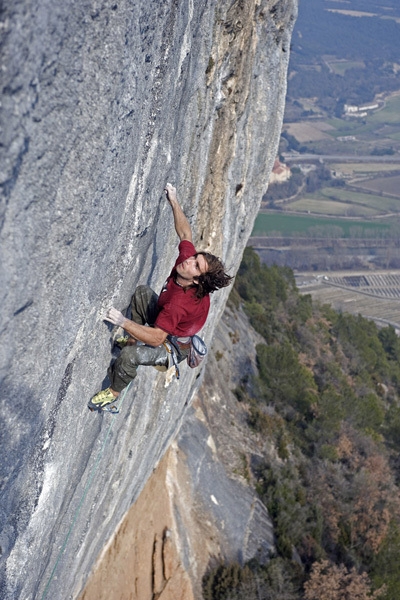
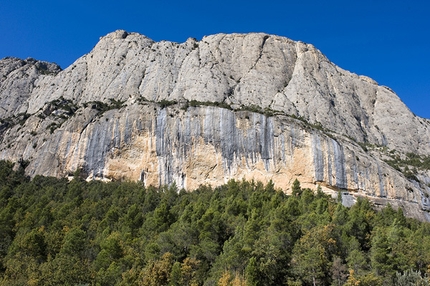
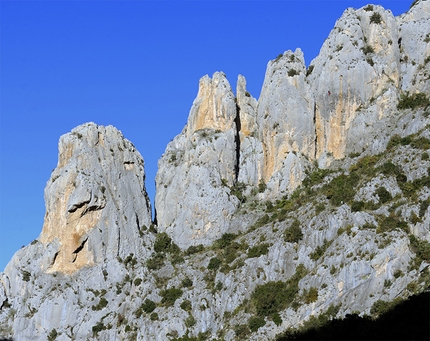

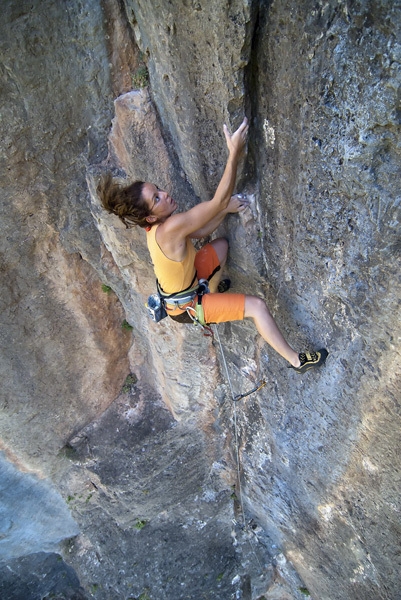
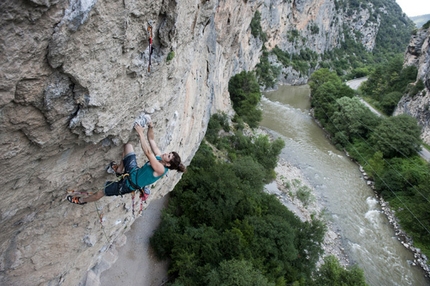

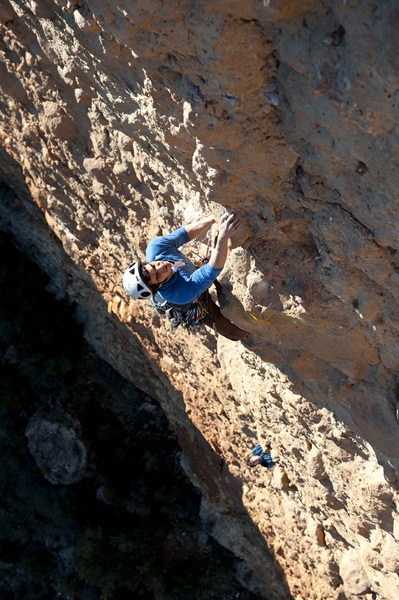
 See all photos
See all photos











